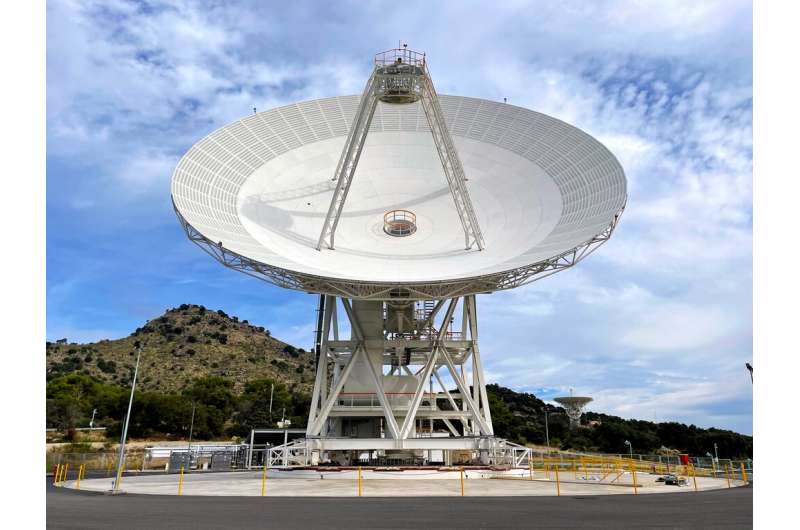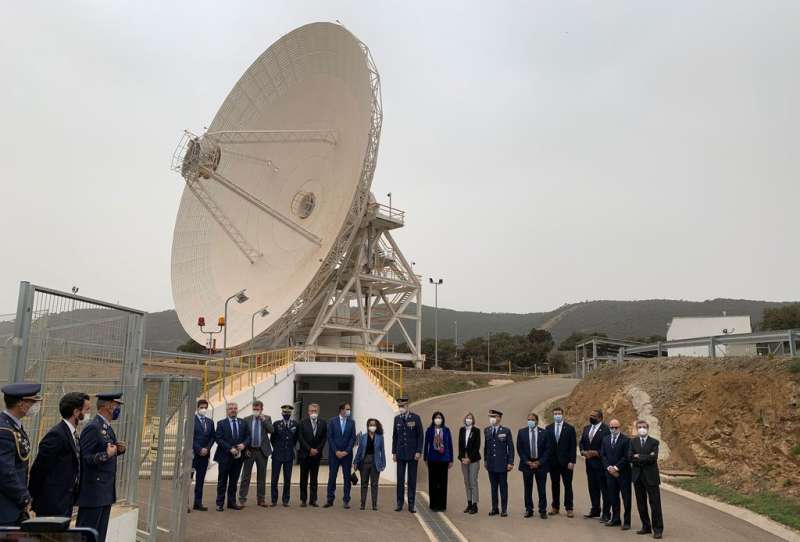NASA adds giant new dish to communicate with deep space missions

There's a powerful new member of NASA's family of giant antennas that enable engineers and scientists on Earth to communicate with the growing number of spacecraft exploring our solar system.
Called Deep Space Station 53, or DSS-53, the 111-foot (34-meter) antenna is part of NASA's Deep Space Network (DSN). It's now operational at the network's facility outside Madrid, one of three such ground stations around the globe. The Madrid station is managed on NASA's behalf by Spain's Instituto Nacional de Técnica Aeroespacial (National Institute of Aerospace Technology). To mark the antenna's debut, King Felipe VI of Spain attended the March 16 inauguration ceremony alongside NASA officials and dignitaries from Spain and the U.S.
"NASA is honored and humbled to have the king acknowledge this important milestone by joining us at the Madrid station. His inauguration of the Deep Space Station 53 antenna highlights the critical and historical collaboration between the Kingdom of Spain and the United States that through the Deep Space Network, will continue to enable humankind's exploration of the heavens for many years to come," said Badri A. Younes, deputy associate administrator for Space Communications and Navigation (SCaN) at NASA Headquarters in Washington.

Managed by NASA's Jet Propulsion Laboratory in Southern California for SCaN, the DSN allows missions to track, send commands to, and receive scientific data from faraway spacecraft. Now with 14 operational antennas, the network supports about 40 missions and is expected to support another 40 that will launch in the coming years.
Growing the network
With so many missions to support currently and in the future, NASA began a project to expand the DSN more than a decade ago. DSS-53 is the fourth among six new beam waveguide antennas that the agency is adding to the network. When the project is complete, each ground station—Madrid, along with one in Canberra, Australia, and the Goldstone facility near Barstow, California—will have a total of four such antennas. The DSN's three ground stations are spaced almost evenly around the globe so the network never loses sight of missions as Earth turns.
More about the Deep Space Network
The forerunner to the Deep Space Network was established in 1958 when JPL was contracted by the U.S. Army to deploy portable radio tracking stations in California, Nigeria, and Singapore to receive telemetry of the first successful U.S. satellite, Explorer 1. Shortly after JPL was transferred to NASA later that year, the newly formed U.S. civilian space program established the Deep Space Network to communicate with all deep space missions. It has been in continuous operation since 1963 and remains the backbone of deep space communications for NASA and international missions, supporting historic events such as the Apollo Moon landings and checking in on our interstellar explorers, Voyager 1 and 2.
Provided by Jet Propulsion Laboratory





















